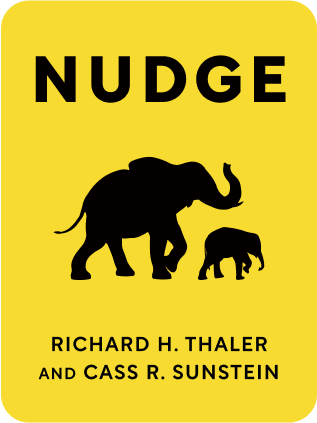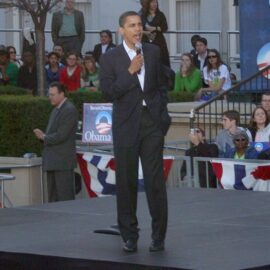

This article is an excerpt from the Shortform summary of "Nudge" by Richard H. Thaler and Cass R. Sunstein. Shortform has the world's best summaries of books you should be reading.
Like this article? Sign up for a free trial here .
What are some Nudge marketing examples? How does Nudge theory apply to products and services?
Nudges can be used in marketing to encourage people to sign up for a service or buy a product. Nudge marketing examples show how people can be subtly persuaded.
Read on to see some Nudge marketing examples.
Nudge Marketing Examples in Health Care
It’s a truth universally acknowledged that the rising expense of health care in the US is unsustainable, yet researchers and policymakers struggle to rein in costs.
One area where experts believe money could be saved is medical liability. Tort reform, the argument goes, would reduce the need for doctors to purchase expensive malpractice insurance, a cost that is passed onto health insurance companies in the form of high provider service fees and onto health-care consumers in the form of high premiums or deductibles. Estimates show that hospitals pay anywhere from $11 billion to $29 billion a year to handle medical malpractice lawsuits.
Under current law, patients are guaranteed the right to sue for medical malpractice. But what if they could waive that right in pursuit of a lower price? Libertarian paternalism’s answer to skyrocketing health-care prices is to allow patients the freedom to waive their right to sue for medical malpractice. This would allow patients who waive their right to sue to receive care at a discount.
If patients were allowed to waive their right to sue, insurance companies could offer plans “with” or “without” the right to sue. The Nudge marketing examples here would use this as part of health plan sales efforts. Even better, insurance companies could make the “without” plan the default, allowing patients to opt in to the “with” plan at an additional cost.
One objection to weakening malpractice liability is that the “deterrence effect” of that liability will be weakened as well; in other words, doctors, knowing they can’t or won’t be sued, may be more inclined to risky treatments or negligent care. This argument is undermined by the fact that malpractice insurance premiums typically aren’t “experience rated”—that is, doctors’ premiums don’t go up when they’re sued, so there’s no financial incentive to offer better treatment (though no doctor wants to be accused of malpractice).
There’s also the fact that scant few patients injured by malpractice actually sue: One study found that less than 2% of patients treated negligently by a New York hospital over one year ended up filing suit.
More Nudges
Of course, the reforms described in the preceding chapters just scratch the surface of what’s possible with informed choice architecture. Here are some additional Nudge marketing examples that further illustrate what’s possible through the power of a nudge:
- Stickk.com: Proposed by two Yale economists, Stickk.com facilitates people’s promises to themselves. The site would support both financial and nonfinancial commitments, and it would even support group goals among multiple committers. Say, for example, you wanted to lose 20 pounds in 2020 and were willing to risk $5,000 to force yourself to do it. If you fail to lose the weight, stickk.com would automatically send the money to charity; if you succeed, stickk.com would give the money back.
- The “Power-Aware” Cord: Developed in Sweden in response to a government-sponsored effort to reduce energy use through design, the power-aware cord glows at different brightnesses depending on how much current is running through it (for example, it grows brighter if the light it’s attached to has been on for a long time).
- Carbon Labels: Japan and other countries are experimenting with labeling certain products with their carbon footprint in an effort to raise awareness of climate change. This is one of the Nudge marketing examples that is built on sharing information.
- Trayless Cafeterias: An experiment at Alfred University in New York found that when cafeteria patrons weren’t offered a tray, the amount of food and liquid waste produced by the cafeteria plummeted—by between 30%–50%!—because patrons couldn’t pile on food they would eventually discard. Other universities are experimenting with a similar nudge to reduce food waste.
Nefarious Nudge Marketing Examples
Given how susceptible Humans are to nudges—our bias toward defaults, the ease with which we can be “primed” to make certain choices—it’s obvious that, in the wrong hands, choice architecture can be used against a chooser’s best interest. (Here’s one of the common Nudge marketing examples: when a company offers you a special introductory rate, then hikes up the price without your knowledge after the introductory period is over.)
The answer to this objection is a hallmark of libertarian paternalism: transparency. If companies are required to advertise their fee schedules in advance, in large rather than fine print, and government officials must publicly report any possible conflicts of interest, we can gauge the choices we’re being offered against any conflicting incentives of the choice architect.
A close relative of transparency is the “publicity principle”—the requirement that any proposed policy be defensible in public. For example, if a government wanted to use subliminal messaging to elect an incumbent, that sort of nudge would be impossible to defend to that incumbent’s detractors. A nudge to promote better saving habits, however, would be.
(Shortform note: Thaler and Sunstein argue that any subliminal messaging, even for a beneficial behavior, would run afoul of the publicity principle, because people don’t like being influenced “without being informed of that fact.” They seem not to recognize that that’s exactly what choice architecture does.)

———End of Preview———
Like what you just read? Read the rest of the world's best summary of Richard H. Thaler and Cass R. Sunstein's "Nudge" at Shortform .
Here's what you'll find in our full Nudge summary :
- Why subtle changes, like switching the order of two choices, can dramatically change your response
- How to increase the organ donation rate by over 50% through one simple change
- The best way for society to balance individual freedom with social welfare






